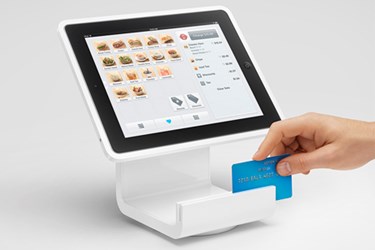Grocery and Convenience Store IT News for VARs — October 24, 2013

By Anna Rose Welch, Editorial & Community Director, Advancing RNA

This week’s news includes a reminder from Isis that the mobile wallet market is growing, a survey that shows supermarket apps have marked ROI, and a warning that cyber criminals target small convenience stores.
Future Of C-Stores: Mobile Wallets, Geolocation, And Heat Mapping
According to an article by Convenience Store News, mobile wallets, geolocation, and heat mapping are the future of c-store technology. While mobile payment adoption is still slow, many retailers are scheduling mobile payments on their 2014 agendas. According to Doug Kilgour from Isis, the mobile wallet industry will reach $200 billion by 2015 and 86 percent of POS terminals will be contactless by 2017. Geolocation through app use can provide customers with regional deals and build loyalty to the store closest to the customer. Heat mapping also enables c-stores to determine the most popular locations/items in each store, the success of store displays, and customer demographics, including ethnicity.
Your Customers Will See ROI From Supermarket Apps
Supermarket News presents some key highlights from a new study released by Match ShopLab and Novartis Consumer Health revealing that supermarket apps can attract customers. According to the study, 20 percent of 2,340 primary customers surveyed have downloaded supermarket apps and most consumers use these apps twice a month. However, the study also reveals retailers need to promote the benefits of their mobile apps more clearly, considering 71 percent of non-app users were unaware food store apps existed. Faster speed, frequent rewards and new reasons for engagement are the areas retailers should concentrate on to boost app popularity, according to the study.
Cyber Attacks Bigger In Small Convenience Stores
According to Convenience Store News, cyber hackers are much more likely to target convenience stores with 100 locations or less than they are to target large retailers. Cyber hackers view small convenience stores as easier targets because they do not have the financial means or manpower to spend large amounts of time overseeing logs/preventing threats. To date, Romania and China are the largest perpetrators of cyber hacking. An expert from Verizon, Dante Mercurio, encourages CIO’s of smaller c-store companies to invest in malware protection and monitoring.
Food Price Inflation Leads Shoppers Online
Nielsen recently released a new report analyzing how the rising cost of groceries is affecting global shoppers’ buying habits. According to the study, 85 percent of responders of all economic classes claim the rising prices will affect their decisions in the store. The survey revealed 33 percent of responders claimed they would shop more at discount/dollar stores, while 20 percent claim they would use supermarkets for grocery needs. The survey also showed 32 percent claimed they would turn to online channels to look for deals to help save money.
Online Grocery Sales A Necessary Venture
A new report released by The Boston Consulting Group (BCG) reveals that the online grocery market is expected to reach $100 billion by 2018. BCG argues that starting online operations is both a possibility and a necessity for all markets looking to maintain market leadership. The report, “Omni-channel Alchemy: Turning Online Grocery Sales to Gold” identifies four elements for building a successful online grocery business. The report encourages interested parties to seize the opportunity and to begin with the click and collect model. Similarly, targeting affordable differentiation and evolving and adapting are other essential steps to take when beginning an online grocery program. The research also shows that young families and affluent couples would be the most likely to take advantage of and spend far more using online grocery shopping.
Grocery and Convenience Store IT Talking Points
Using the latest IRI report, Elaine Watson for Food Navigator-USA examines what higher gas prices might mean for convenience stores and c-store marketing. Amping up outdoor advertising and exploring opportunities in fresh foods/healthy snacking and alcoholic beverages are some answers for c-stores facing slow sales because of high gas prices.
William McCollough for Convenience Store News discusses EMV implementation and the mandates/future liability shifts that will apply to acquirers and merchants who do not have EMV-capable terminals. McCollough also presents a list of questions and other considerations for small gasoline retailers and their payment processors to consider when making decisions about EMV technology.
In his article for Time, Brad Tuttle elaborates upon the rising trend of “click and collect” grocery services and some of the ways retailers are using this service.
